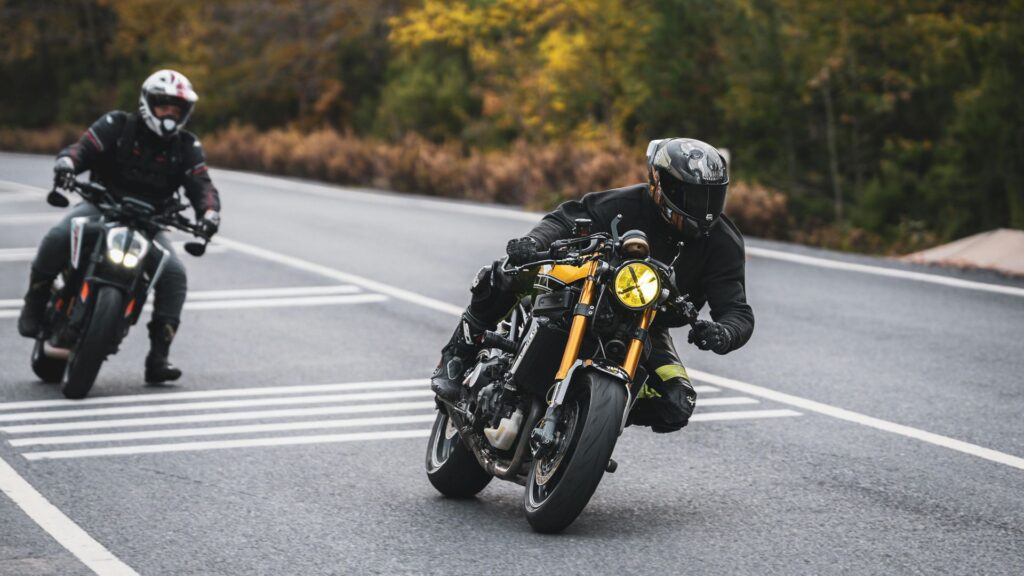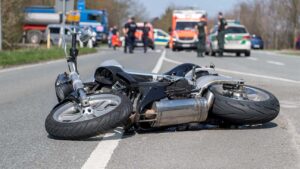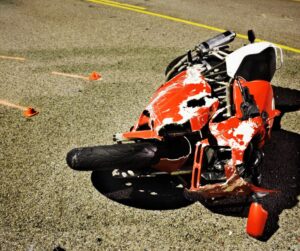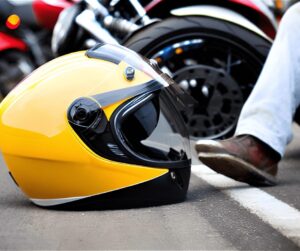
Riding through the Bronx means dealing with more than just traffic. It’s about reading the rhythm of the borough. From the constant stop-and-go along the Grand Concourse to the tight turns feeding onto the Cross Bronx Expressway, every block has its own tempo. Locals know how quickly a smooth ride can turn stressful once you hit construction, double-parked cars, or drivers cutting across lanes without warning.
Motorcyclists here face the same challenges as everyone else on the road, just with less protection. Understanding the dangerous roads for Bronx motorcycle accidents helps riders plan better routes and stay alert on the borough’s most unpredictable stretches.
Why Riding in the Bronx Carries Elevated Risk
Anyone who rides here already knows the Bronx doesn’t make it easy. Between the trucks on the Bruckner, the tight turns near the Bronx River Parkway, and the sudden merges on the Cross Bronx, there’s barely a stretch of open road to relax on. The borough’s network of expressways and parkways forces motorcycles to share tight lanes with drivers who are often impatient, distracted, or trying to beat traffic lights. Short exits, blind curves, and constant stop-and-go movement make it one of the toughest places in the city to ride. These conditions have turned many of the borough’s busiest corridors into Bronx motorcycle crash hotspots, where even a small mistake can have serious consequences.
According to the New York City Department of Transportation, motorcyclists face a disproportionate level of danger on city roads. Although motorcycles make up only about two percent of registered vehicles, they account for roughly fourteen percent of traffic fatalities citywide. The agency’s Bronx motorcycle accident statistics also show that most deadly crashes happen on city streets, not highways, proving that slower traffic doesn’t always mean safer conditions.
That’s why Bronx riders depend on experience and instinct. Whether you’re cutting across Fordham Road during rush hour or rolling down Pelham Parkway late at night, defensive riding isn’t optional—it’s survival.
Roads and Corridors That Pose Added Challenges
While no single street can be labeled the most dangerous, Bronx riders know that there are specific routes where traffic never lets up, and small mistakes can turn serious quickly. Some of the most common motorcycle accident locations in the Bronx include the following.
Cross Bronx Expressway (I-95)
This major interstate cuts through the heart of the borough and is notorious for gridlock. Tight lanes, abrupt stops, and constant merging leave little room for riders to maneuver. Sudden slowdowns often trigger chain-reaction crashes involving multiple vehicles.
Bruckner Boulevard and Bruckner Expressway
These routes connect multiple boroughs and carry a high volume of commuters. Merging from local lanes to express ramps requires quick acceleration and judgment—challenging tasks for motorcycles amid aggressive traffic. Construction work and uneven pavement add to the danger.
Bronx River Parkway
Winding, tree-lined curves and shaded sections reduce visibility, particularly after rain. Changes in lighting can make it harder for drivers to spot motorcycles approaching turns or bridge transitions.
Grand Concourse
As one of the Bronx’s main north-south arteries, Grand Concourse sees heavy bus, car, and pedestrian traffic. Intersections along its commercial stretches frequently involve left-turn conflicts, one of the leading causes of motorcycle collisions in New York City.
Pelham Parkway and Fordham Road
Both corridors mix local and through-traffic in tight spaces. Delivery vehicles and buses often block sight lines, while frequent lane changes increase the risk of sideswipe incidents.
Jerome Avenue and Clifford Place
This intersection stands out for its crash severity rather than volume. The mix of pedestrians and vehicles in a confined intersection magnifies danger for motorcyclists attempting to navigate safely.
East Gun Hill Road
Extending across several neighborhoods, East Gun Hill Road experiences steady crash activity along its length. For riders, the combination of cross-traffic, bus stops, and turning vehicles makes this corridor especially challenging.
These areas reflect the borough’s overall traffic pattern: dense, unpredictable, and unforgiving of error. Awareness of these conditions helps riders adapt their approach rather than avoid entire routes.
Common Causes of Bronx Motorcycle Crashes
Across these corridors and other busy areas, several recurring factors contribute to accidents:
- Drivers turning left across oncoming motorcycles;
- Speeding or abrupt lane changes in congested lanes;
- Distracted driving and mobile-phone use;
- Potholes, oil patches, or debris on older pavement; and
- Poor lighting during the evening and early morning hours.
Anyone who rides here has seen it firsthand—drivers turning left without looking, cars drifting into lanes, and potholes that never seem to get fixed. The combination of human error and environmental challenges puts Bronx motorcyclists at a higher risk compared to riders in less congested parts of the state.
How Riders Can Lower Their Risk
While no one can control the behavior of other motorists, adopting the following safer habits can reduce the likelihood of being involved in a crash:
- Stay visible. Use headlights even during the day and wear reflective gear to stand out in traffic.
- Anticipate left-turning vehicles. Slow down at intersections and position yourself to avoid blind spots.
- Maintain distance. Leave extra room behind cars and trucks to allow time for evasive action.
- Plan routes strategically. Avoid rush hour on the Cross Bronx or Bruckner when traffic barely moves and tempers run high.
- Inspect your motorcycle often. Check tires, brakes, and lighting regularly. Even minor issues can become dangerous in urban traffic.
Defensive riding and situational awareness remain a motorcyclist’s best protection against the borough’s unpredictable conditions.
What to Do After a Motorcycle Accident
After any crash, safety and medical care are the top priorities. Call 911, seek immediate evaluation from emergency personnel, and make sure the police complete an accident report. Photographs, witness contact information, and documentation of visible injuries all provide valuable evidence.
Because New York’s no-fault insurance system excludes motorcycles, injured riders must typically pursue compensation through the at-fault driver’s insurer or by filing a personal-injury lawsuit. Consulting an attorney familiar with Bronx traffic patterns ensures that necessary evidence, like surveillance footage or maintenance records, is preserved before it disappears.
Greenspan & Greenspan has represented riders and their families across New York since 1959. The firm’s deep understanding of local traffic design and litigation experience allows it to navigate complex cases involving multiple vehicles, contractors, or public agencies.
Frequently Asked Questions
Why Are Motorcyclists at Greater Risk in New York City?
City congestion, limited visibility, and exposure to larger vehicles all increase danger. DOT data confirm that motorcyclists experience fatalities far beyond their share of total registrations.
Are City Streets or Highways More Dangerous?
Most fatal motorcycle crashes in New York occur on city streets, where turning vehicles and stop-and-go movement create constant hazards.
How Can I Protect Myself on Busy Bronx Roads?
Maintain a visible lane position, keep a safe distance, and remain alert at intersections and lane merges, which are areas where most motorcycle collisions occur.
Can Poor Road Maintenance Be Grounds for a Claim?
Yes. If a government agency or contractor failed to repair dangerous pavement or signage, a claim may be possible. Strict notice deadlines apply; therefore, it is advisable to contact an attorney promptly.
Do I Need a Lawyer After a Minor Crash?
Even seemingly minor injuries can worsen later. An attorney can review your case and ensure any settlement reflects the full extent of your damages.
Staying Safe on Bronx Roads
Since 1959, Greenspan & Greenspan has represented injured riders across the Bronx and greater New York City. Our attorneys understand how Bronx traffic and road design impact motorcycle crashes and the resulting injuries. If you or a loved one was hurt on one of the dangerous roads for Bronx motorcycle accidents, contact our firm to discuss your rights and recovery options.







